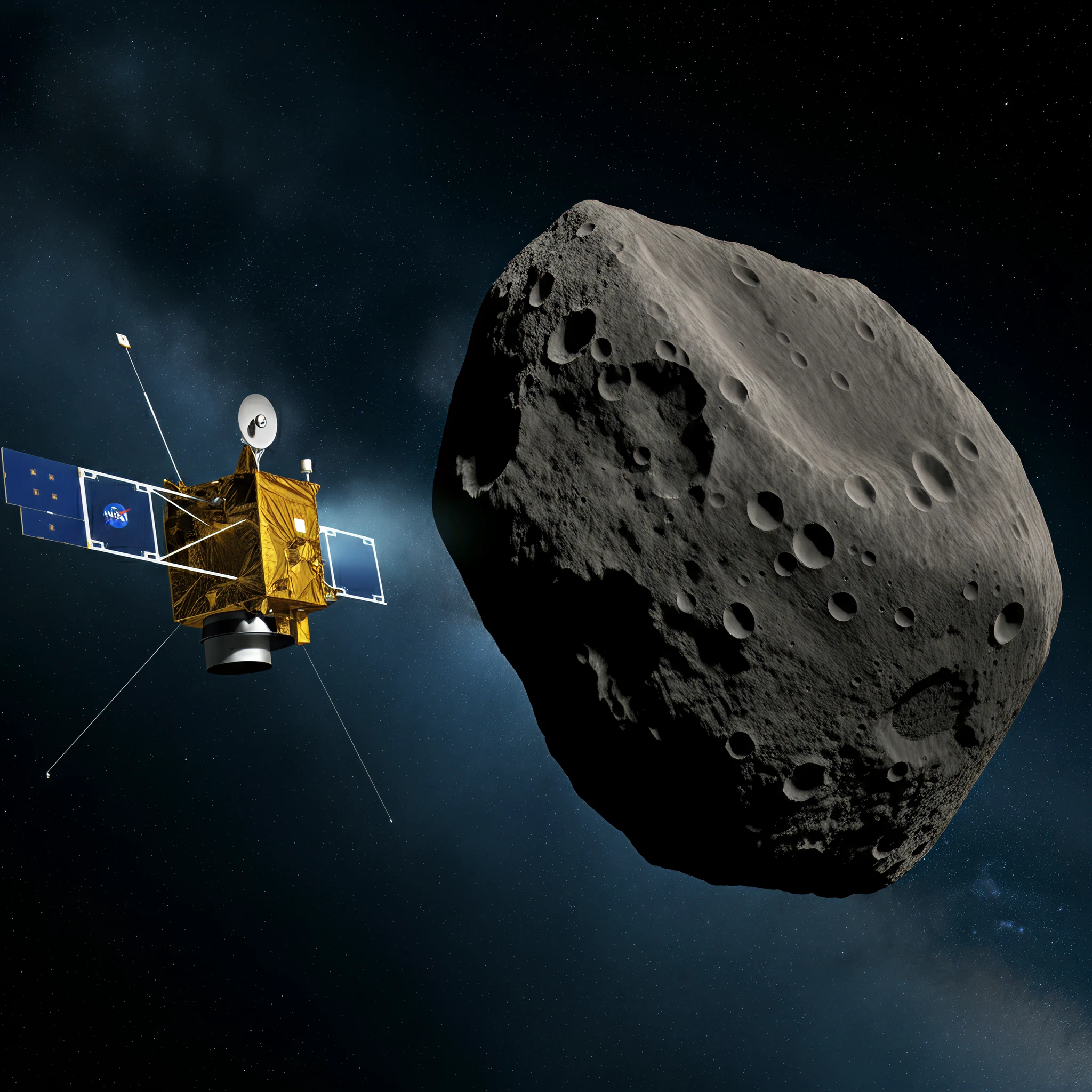NASA’s steadfast commitment to unraveling the mysteries of the cosmos took a fascinating turn as its Lucy spacecraft buzzed past an asteroid unlike any previously encountered. Zooming through space at an incredible 30,000 mph, Lucy captured stunningly detailed images of the asteroid “Donaldjohanson,” providing new insights into the history of our solar system.
A Glimpse at Donaldjohanson
Named after the paleoanthropologist Donald Johanson, known for discovering the famed Lucy hominid fossil, asteroid Donaldjohanson is a five-mile-long celestial object. On April 20, NASA’s Lucy spacecraft came within 600 miles of the asteroid, capturing remarkable views with its advanced imaging systems.
The images reveal an elongated “contact binary” formation with a narrow neck connecting two distinct lobes. NASA scientists were surprised by its unique structure, describing it as “nested ice cream cones,” adding an exciting layer of questions about its formation and origins.
Image Credit: NASA / Goddard / SwRI / Johns Hopkins APL / NOIRLab
Why Is This Important?
Donaldjohanson’s flyby serves as a key milestone in the Lucy mission, which aims to explore the Trojan asteroids locked in Jupiter’s gravitational pull. These asteroid swarms hold critical clues about the formation of the planets and the early solar system from over 4 billion years ago.
“This is the first reconnaissance of the Trojan asteroids,” said Hal Levison, planetary scientist and leader of the Lucy mission. “If we want to understand ourselves, we have to understand these small bodies.”
The mission’s ultimate goal is to unlock secrets about the primordial materials that helped form Earth and other planets. While Donaldjohanson wasn’t a primary focus, its unique structure provides critical data that could deepen our understanding of asteroid formation and evolution.
Technology Behind the Achievement
Lucy’s Long-Range Reconnaissance Imager (L’LORRI) played an instrumental role in capturing clear and detailed visuals of the asteroid during the high-speed flyby. This technology is part of a specialized suite of cameras enabling Lucy to document its upcoming encounters with Trojan asteroids, set to occur in 2027.
The mission’s advanced imaging systems allow scientists to study unexplored celestial bodies with unprecedented detail and precision, strengthening humanity’s understanding of the universe.
What’s Next for Lucy?
The Donaldjohanson flyby acts as a dress rehearsal before Lucy reaches its primary targets, the Trojan asteroids, in August 2027. The spacecraft will use its advanced capabilities to study the chemical and physical properties of these icy, ancient relics, adding chapter after chapter to the story of our solar system.
Though Donaldjohanson wasn’t a main objective, it offered invaluable insight into asteroid characteristics and cosmic evolution. Lucy’s mission is expected to inform future planetary studies and guide humanity toward a deeper understanding of our place in the cosmos.
Final Thoughts
NASA’s Lucy spacecraft passing Donaldjohanson is a testament to cutting-edge technology and the sheer determination of scientists eager to unlock the mysteries of space. With the promise of more discoveries to come, these early findings are just the tip of the cosmic iceberg.
Stay tuned as Lucy continues its groundbreaking odyssey to the Trojan asteroids, opening new doors to understanding our planet’s origins.








